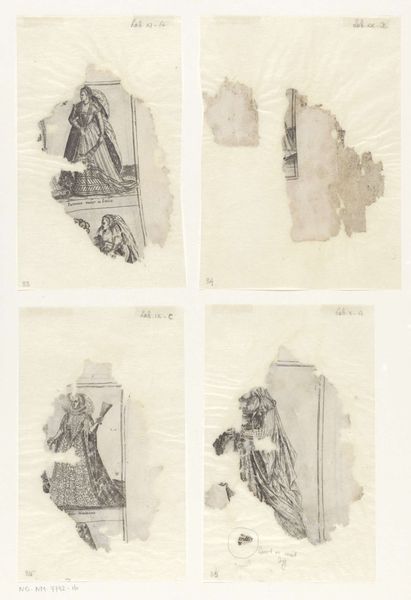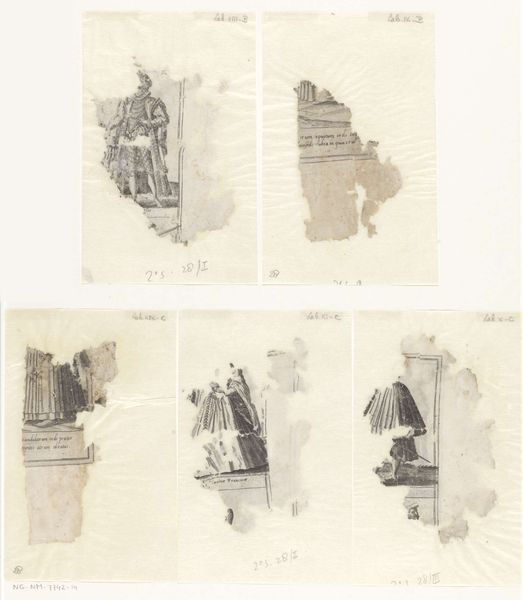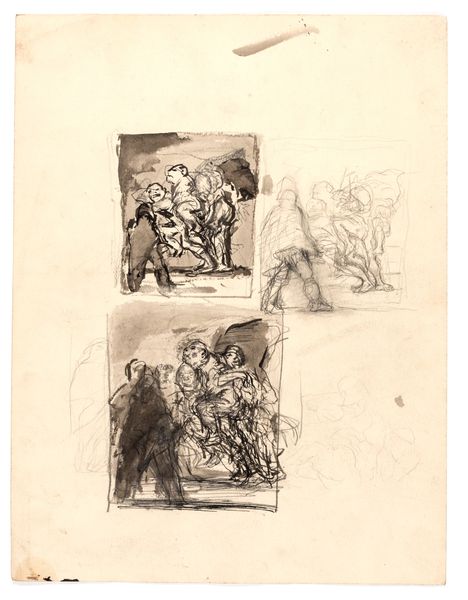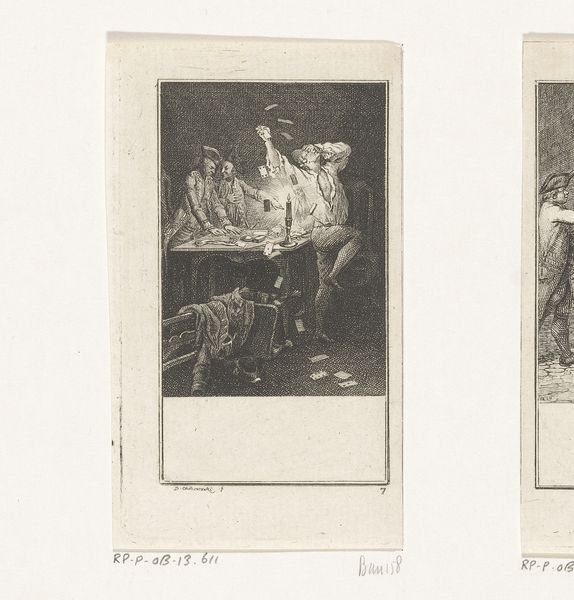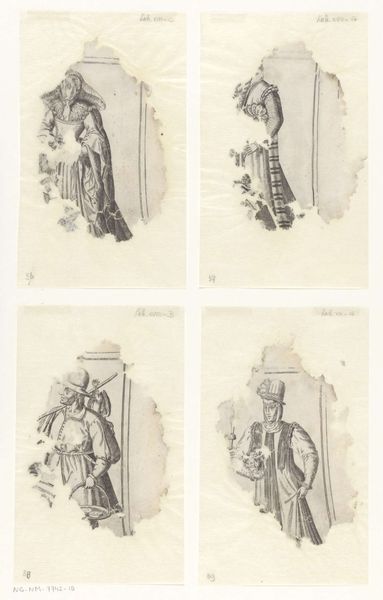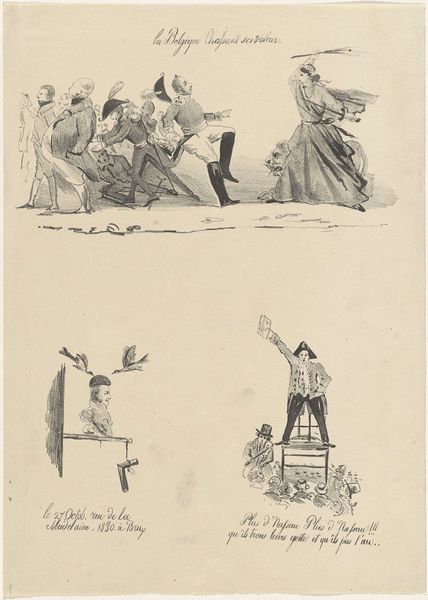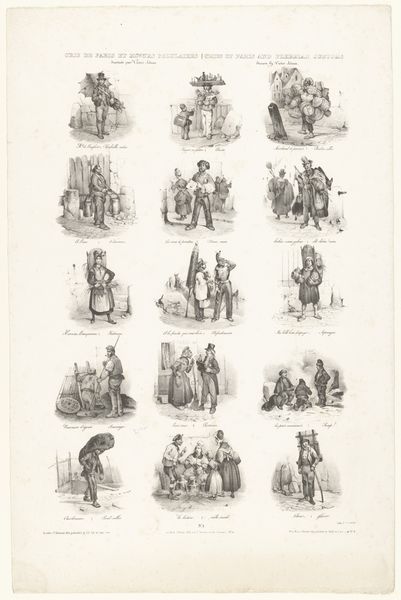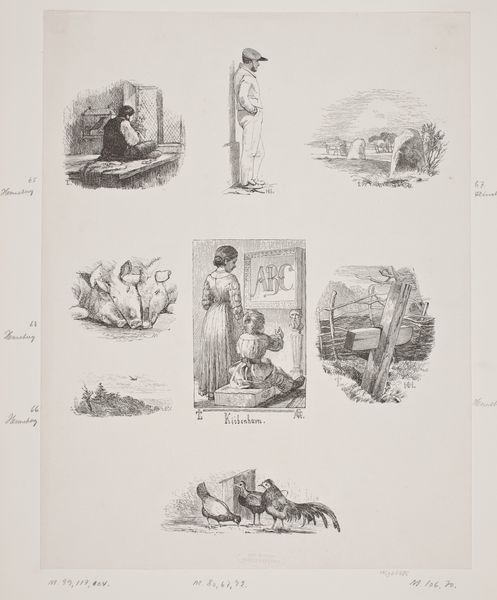
Fragmenten van prenten met wereldlijke en geestelijke klederdrachten 1581 - 1596
0:00
0:00
drawing, paper, ink, pen
#
portrait
#
drawing
#
mannerism
#
figuration
#
paper
#
ink
#
pen-ink sketch
#
line
#
pen
#
genre-painting
#
history-painting
#
miniature
Dimensions: height 170 mm, width 130 mm
Copyright: Rijks Museum: Open Domain
Editor: So, here we have "Fragmenten van prenten met wereldlijke en geestelijke klederdrachten" made between 1581 and 1596 by Abraham de Bruyn. It's pen and ink on paper, a series of fragments featuring different figures in various states of dress. It gives me a sort of voyeuristic sense, like peeking into another time. How do you interpret this work? Curator: I see these fragments as a fascinating glimpse into the construction of identity through clothing in the late 16th century. De Bruyn, through his careful depiction of attire, provides a social commentary, even a subtle form of activism. Consider, what does clothing signify about an individual's place in the world? Editor: Well, I suppose it shows status, profession... maybe even their religious affiliation? Curator: Precisely! This work invites us to analyze how power operates through visual signifiers like garments. Are these fragments purely documentary, or do they hint at something more? Think about the social hierarchies embedded in the details. How much agency did the individuals depicted truly possess, considering the restrictive codes of dress prevalent at the time? Editor: I guess they didn’t have much say in what they wore, social expectations were really strict then. It's interesting how fashion can reflect larger societal structures. Curator: Exactly. De Bruyn's work becomes a subtle form of social critique, exposing the ways in which clothing acts as both a marker of identity and a tool for social control. Consider it as a reflection of cultural and historical power dynamics as exemplified in daily routines of life, but also to reveal certain social values. Editor: I never thought about it that way. Seeing it as a way to explore historical context changes everything! Curator: That’s right! Looking closely at these fragments encourages a critical engagement with our own present-day constructions of identity and social roles, challenging our perceptions and assumptions on what truly empowers us, what restricts our free will.
Comments
No comments
Be the first to comment and join the conversation on the ultimate creative platform.
